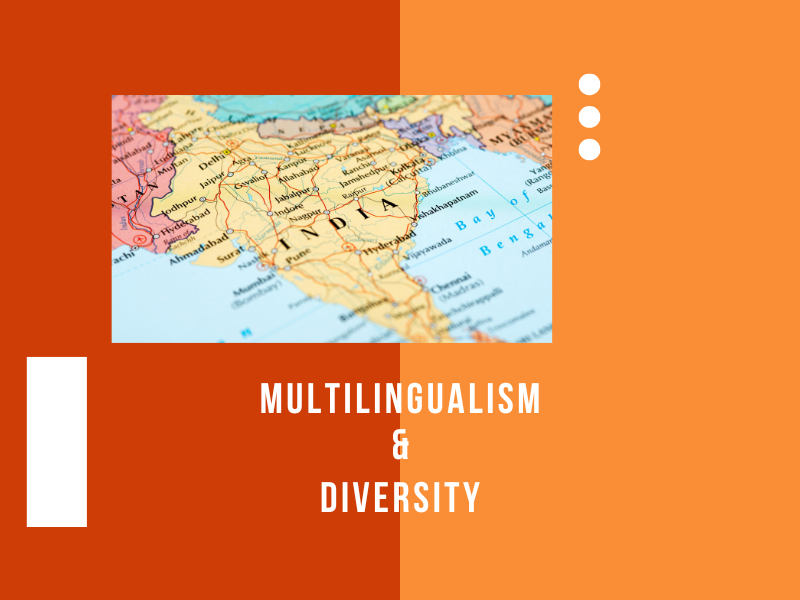Multilingualism and diversity form the vibrant tapestry of our world. The ability to communicate and connect with people from different cultural backgrounds through their native languages is a gift that enriches our lives. In this article, we explore the significance of multilingualism and diversity. What is its positive impact on society and how does it foster understanding and promote unity?
India and Multilingualism
In India, multilingualism is a remarkable ability that characterizes most of its states. The diversity of languages spoken across the country is what sets India apart and makes it truly unique. People in India have an inherent talent for navigating multiple languages, seamlessly switching between them in their daily lives. This linguistic diversity reflects the rich cultural heritage and centuries-old traditions that thrive within the nation. It creates a vibrant tapestry where each language represents a distinct identity and fosters a sense of unity in diversity. The multilingual nature of India is not merely a characteristic; it is a testament to the country’s inclusivity and acceptance of different cultures and languages, making it a captivating land where the beauty of diversity shines brightly.
The Power of Multilingualism
Multilingualism serves as a bridge between cultures, allowing individuals to engage in meaningful exchanges, share experiences, and cultivate empathy. When we make the effort to learn and appreciate different languages, we open doors to new perspectives and create opportunities for cross-cultural collaboration.
In a world increasingly connected by technology and globalization, being multilingual offers immense practical benefits. It opens up a realm of professional opportunities, enhances employability, and promotes effective communication in a global marketplace. Moreover, multilingualism has been shown to sharpen cognitive skills, improve memory, and foster creativity.
Embracing Diversity
Diversity encompasses more than just linguistic differences. It encompasses the myriad of cultural practices, customs, traditions, and beliefs that shape our identities. When we celebrate diversity, we create an inclusive society where everyone feels valued and respected.
Language lies at the heart of cultural diversity. Each language is a unique window into a specific community’s values, heritage, and ways of life. By embracing multilingualism, we not only preserve linguistic diversity but also validate the identities of individuals who belong to those communities. This recognition is vital for promoting social harmony and ensuring that no language or culture is marginalized or overshadowed.
Promoting Unity through Language
Language is a powerful tool for unity, transcending boundaries and forging connections. When we learn and use someone’s native language, we demonstrate our genuine interest in their culture and promote a sense of belonging. Language becomes a bond that unites people from different backgrounds, fostering mutual understanding, and breaking down barriers.
To promote multilingualism and diversity, it is crucial to provide accessible language education programs that empower individuals to express themselves confidently in their mother tongues. Such initiatives not only preserve cultural heritage but also enable individuals to navigate the world with a strong sense of identity and self-worth.
Conclusion
Multilingualism and diversity are invaluable treasures that contribute to the fabric of our society. By celebrating and embracing these aspects, we pave the way for a world that thrives on understanding, respect, and unity. Let us continue to cherish the richness of languages, promote language preservation, and foster environments where every voice is heard and valued. Together, we can build a future that embraces multilingualism and diversity as pillars of a harmonious and inclusive global community.

